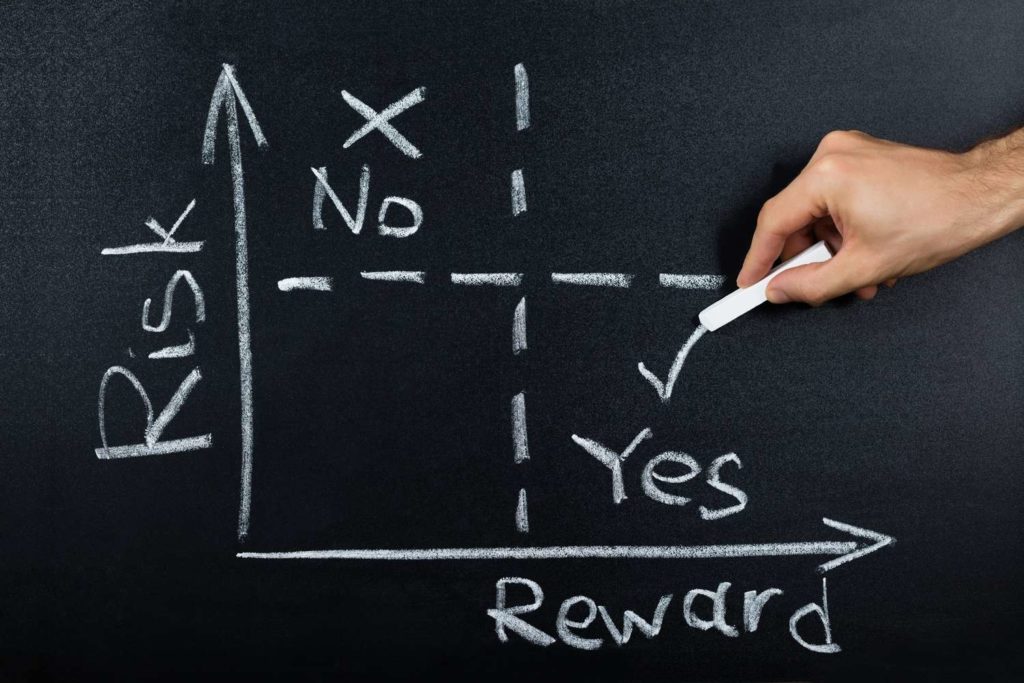The definition of a risk is “a situation involving exposure to danger.” It’s no wonder that you’ll hear so many negative quotes about risk: “It’s just too risky!” “Don’t take unnecessary risks!” “What’s the risk/reward ratio?”
On the other hand, you will see lots of inspirational quotes about risk: “No risk it, no biscuit” was a favoring saying of retired Super Bowl winning coach Bruce Arians. But much of the positivity you hear about risk is from the world of sports, not business. It seems that in business, we are always looking for a maximum return with minimum risk.
But with a European War, supply difficulties, recent pandemics, inflation and a possible looming recession, there is really no way to avoid risk in today’s business world. You all already know that – and you all are managing risk in your company’s right now.
Is it possible to actually see business risk much like football Coach Arians – actually embracing it and seeing it as a path to differentiation and winning in the marketplace? We know of companies that are thriving in the current risk-heavy environment, and today I am going to share a little bit about how they do it.
The First Secret to Leveraging Risk
Their biggest secret is to refurbish a couple of key strategy tools often, especially in times of heightened change and risk. One of these tools is called an Influencer Map. Influencer Maps chart the dynamics of how decision-making power is shifting in an industry. Companies that pull out an influencer map in turbulent times often get the jump on competitors.
We know of a company that makes respirators. The key decision-makers in that industry were historically hospital-based purchasers, who would often consult clinicians for their opinions.
But in the early days of the pandemic, this company updated their influence map and realized that if the pandemic continued apace, that governments might need to get involved in purchasing respirators. They immediately pulled together selling teams to call on the various governments of the world, getting the jump on competitors who did not see the opportunity right away.
They had record sales over the last few years and used the revenues to fund some exciting new innovations. Because they have the discipline to consult their key strategy tools and reach a consensus on what is about to happen in uncertain times, they aren’t afraid of risk. They see it as a chance to outmaneuver competitors who are fearful of making a move.
Cancel Sniffing Dogs – and Why You Can’t Skip This Key Strategy Step!
Another tool that should be used in times of upheaval is called the Trend Analysis tool. Sounds simple, but it is often used in a way that skips a key step.
The tool helps companies think ahead about coming trends and risks, decide which ones really matter in their industry, and — this is key — predict how those trends will change customer needs. We knew of two medical device companies that both uncovered a trend early, but one of them missed the key step of thinking how it would affect customers.
The trend was that some dogs were being trained to predict cancer simply by smelling the breath of a patient. This was a huge risk to companies that build expensive cancer-detecting machines. One company spun out over the trend, arguing internally for months over an appropriate response. They never did do anything about the cancer-sniffing dogs, and thought they were right when the practice didn’t pick up speed.
But the other company noted the trend and asked, “what are the implications of this trend to customers?” What they determined was that customers would not trust a dog diagnostic, but that they did love the idea of simply breathing on a dog instead of climbing into a claustrophobic machine!
So they built a machine that patients simply breathed into like they would on a dog, but which had the scientific rigor and FDA approval so that customers could trust the results. They turned the risk of less invasive diagnostics into a new opportunity, and they thrived because of it.
How to Get Lucky In Business
We can vouch for the power of trend analysis. Several years ago, we over-rated the pace of a shift from traditional in person marketing workshops to virtual sessions. We built capabilities to deliver session remotely, and they sat largely unused for awhile. But then the pandemic hit, and we were ahead of our competitors in being able to deliver sessions to dispersed groups operating out of their homes all across the world. Sometimes, when you get out of front of and embrace risk, you get lucky!
The secret to being able to sleep at night in times of massive risk is to have discipline around using some strategic tools that predict shifts in the market, changes in decision-making power, and shifts in customer needs. When competitors are confused, pulling back or taking no action at all, you can find new routes to market and new products and services that will have you embracing risk like Coach Arians and saying at your company “no risk it, no biscuit!”

 Tom Spitale
Tom Spitale

